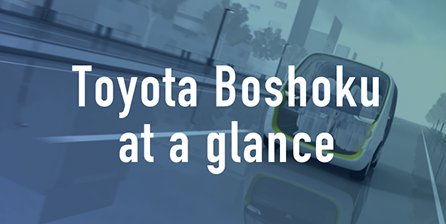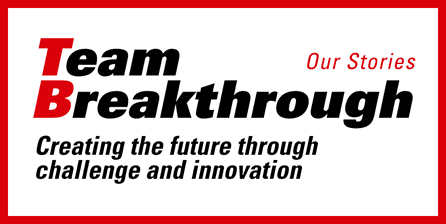Response to the TCFD
Based on its Corporate Philosophy of “Promote corporate activities that help protect the global environment”, the Toyota Boshoku group makes collective efforts to contribute to preserving the global environment in order to realize a sustainable society.
We formulated the 2050 Environmental Vision in 2016 and identified our Materiality (important issue to be resolved through our business operations) of “Together with our business partners, we will realize MONOZUKURI innovations that minimize environmental stress” in 2020 in order to promote environmental initiatives. And we revised a part of the 2050 Environmental Vision in 2023 based on social trends.
In April 2020, we endorsed the recommendations of the Task Force on Climate-related Financial Disclosures (TCFD). By extensively analyzing the impact of climate change on our business and the risks and opportunities that result from it based on scenarios, we are reviewing the applicable costs and reflecting them in our management strategy. Based on the results of scenario analysis, we will continue to strengthen our response to risks and opportunities and work on further information disclosure.
Governance
Concrete measures related to climate change and other environmental issues are decided upon by the Board of Directors and implemented. Then these measures will be reviewed at the Corporate Strategy Meeting, the Corporate Planning Meeting, and the Corporate Management Meeting.
Policies and plans to respond to environmental issues identified by the Board of Directors, the Corporate Strategy Meeting, and the Corporate Planning Meeting are shared at the Environment Promotion Meeting, which is held three times annually, and is connected with implementation planning and progress management for environmental issues affecting the Toyota Boshoku group. Additionally, KPIs are created based on implementation planning, and these are reported and subjected to management review at monthly Corporate Management Meetings.
Matters reported and discussed upon at the Environment Promotion Meeting are reported to the Board of Directors as needed, whose directions and supervision allow such matters to be incorporated into group strategy.
Strategy
Scenario Analysis on Climate-related Risks and Opportunities
(1) Scenario Analysis Results
We have identified short-term, medium-term, and long-term risks and opportunities based on the 1.5 to 2°C scenario*1 developed by the International Energy Agency (IEA), in which the impact of transition risks surfaces, and the 4°C scenario*2 developed by the Intergovernmental Panel on Climate Change (IPCC), in which the impact of physical risks surfaces. The table below lists the risks and opportunities that are assessed as particularly high.
- 1.5°C scenario: NZE (IEA World Energy Outlook 2021); 2°C scenario: SDS (IEA World Energy Outlook 2021)
- 4°C scenario: RCP 8.5 (IPCC 5th Assessment Report)
| Causes | Risks / Opportunities | Assessment | Actions | Response Cost (FY2025) | |
|---|---|---|---|---|---|
| Transition risks and opportunities (1.5 to 2°C) | Enhancement of climate change policies, including carbon pricing |
|

|
|
― |
|

|
|
2.2 billion yen | ||
|

|
|
|||
| Enhancement of efforts to promote vehicle electrification |
|

|
|
1.0 billion yen | |
|

|
|
2.7 billion yen | ||
| Change in evaluation by customers and the consumer value standard (raised environmental awareness, etc.) |
|

|
|
1.7 billion yen | |
|

|
||||
| Physical risks and opportunities (4°C) | Worsening of extreme weather, including heavy rain and subsequent flooding |
|

|
|
― |
|

|
|
0.3 billion yen |
(2)Priority Action
Challenge to Carbon Neutrality through a Circular Economy for Product Materials
The Toyota Boshoku group promotes the reduction of GHG emissions in the product life cycle. In addition to reducing the weight of products, using plant-derived materials (biomass), and developing technologies for electrified products, we will improve the recyclability of products. We will also work to reduce GHG emissions from the materials used in our products toward carbon neutrality.
(1) Measures to reduce GHG emissions from product materials

(2) Initiatives for a circular economy

Challenge to carbon neutrality by 2050 by recycling product materials and using biomass
- Reusing products as raw materials to produce new products
- Chemical decomposition of used products and reuse as raw materials for new products
- A renewable resource of biological origin
Risk Management
The Carbon Neutral Environmental Center monitors climate change-related changes in the external or internal environment on a company-wide basis, and identifies risks that could negatively impact our business.
Climate-related risks are officially identified at the Risk Management Promotion Meeting, with the Chief Human Resource Officer(CHRO), head of the Human Resources & General Administration Segment acting as chairperson.
The Risk Management Promotion Meeting receives reports from various departments, and discusses climate change-influenced risks of all kinds, such as typhoons and flooding. Judgments are made concerning the relative severity of risks, with consideration made to the relationship between various risks. Finally, climate-related risks which affect the entire company are identified.
Identified risks are reported to the Board of Directors, under the management of the Chief Risk Officer(CRO)who is also the President.
Metrics and Targets
Medium- and long-term targets
-
2025 Environmental Action Plan
25% reduction in plant CO2 emissions versus FY2020 - 2030 target
50% reduction in plant GHG emissions versus FY2020 - 2035 Challenge Target
Aim for a 100% reduction in plant GHG emissions versus FY2020 -
2050 Environmental Vision
GHG Net-zero in the product life cycle
GHG Net-zero in the plant
Monitoring metrics
- Scope 1, Scope 2 GHG emissions and energy usage (Toyota Boshoku group)
- Scope 3 GHG emissions (Toyota Boshoku group)
FY2024 results





